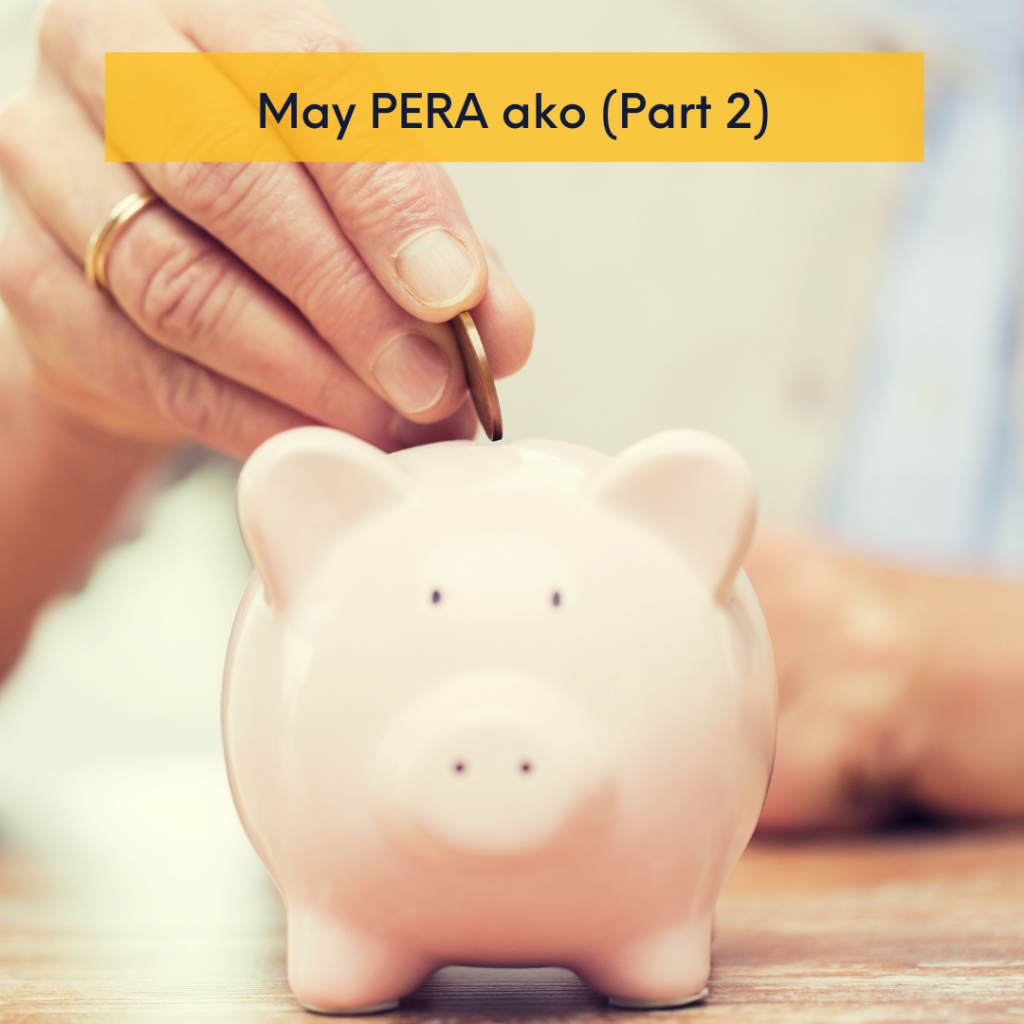
Published 28 September 2020, The Daily Tribune
The Safeguards and Benefits of PERA
PERA is an effective mechanism to promote savings mobilization and capital market development by encouraging people to think ahead and invest in long-term assets. Indeed, there are a lot of reasons to place one’s fruit of labor in PERA.
The law also sets out safeguards to the Contributor’s money by limiting investment to financial products that are non-speculative, readily marketable, and with a track record of regular payments to investors.
PERA products are classified into conservative, moderate and aggressive based on investor-risk profile. Conservative products are those which are investment grade and composed of highly liquid investments, government securities and bonds, deposits with local banks/branches of foreign banks operating in the country and deposits with financial institutions with investment grade credit from an SEC-accredited and reputable credit rating agencies.
Investment products classified as moderate include those which may provide potential returns that are higher than the regular traditional deposit products but with higher level of risk. Lastly, aggressive PERA products are those which provide considerably high return on capital but may involve volatility of returns and higher possibility of loss of investment.
In all cases, the classification of each category of investment product must be disclosed by the Administrator to the Contributor.
Other than the voluntary Contributors, the law also allows an employer to contribute to an employee’s PERA to the extent of the amount allowable to the employee. However, before doing so, the employer must first comply with mandatory SSS contributions and payment of retirement pay, where applicable. The contributions made by the employer shall then be treated as deductions to its gross income. However, notwithstanding the contributions made by an employer, decisions with respect to one’s investment remain the employee’s prerogative.
In terms of benefits, PERA provides a tax break equivalent to 5% of the total contributions made for the year. In addition, investments made through PERA are also tax-free and exempt from withholding tax.
PERA follows the 55-5 rule such that a Contributor may elect to terminate the PERA and withdraw his assets therefrom upon attaining the age of 55 and completing contributions for at least 5 years.
Similar to GSIS and SSS, once the prescribed retirement age is reached, the Contributor shall inform the Administrator whether to receive the proceeds in lump sum or pension for a definite period or lifetime pension. Alternatively, the Contributor may opt to continue his PERA and enjoy the tax privileges that comes with it.
In the event of death of the Contributor, the administrator shall terminate the PERA and release them to the designated beneficiaries. In the absence of a named beneficiary, the PERA assets shall be paid to the Contributor’s estate but will not be included in the gross estate, for taxation purposes.
To serve its purpose as a retirement money, the law discourages early withdrawals to the account. Although not prohibited, premature draws to the investment are subject to a penalty that is equivalent to the tax incentive enjoyed by the Contributor during the entire period of the PERA. Premature termination means termination before satisfying the 55-5 Rule. However, no early withdrawal penalty shall be imposed on any withdrawal of funds upon presentation of a notarized doctor’s certificate attesting to an accident or illness-related hospitalization in excess of thirty (30) days or a certification that the Contributor has been rendered permanently disabled.
PERA intends to help the common Filipino save and grow their finances in the long run. Now that the product is available online, there is really no excuse for the younger and tech-savvy generation not to start saving. Indeed, PERA is a trend we must all jump on in order to prepare for a cozier post-retirement life.
For comments and questions, please send an email to cabdo@divinalaw.com.

